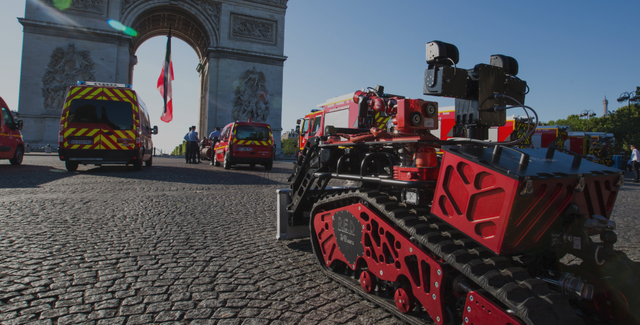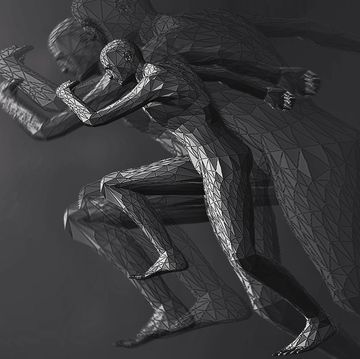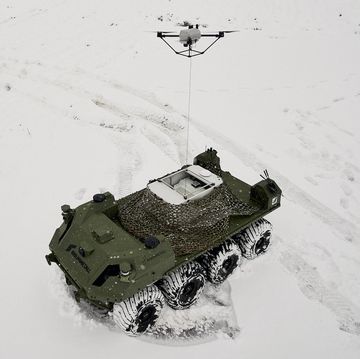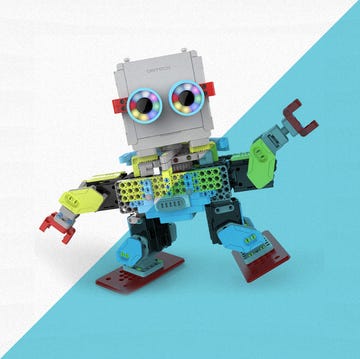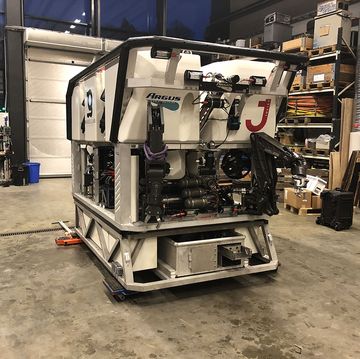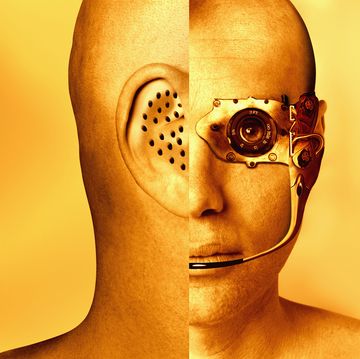Meet WALL-E’s badass cousin, Colossus, a firefighting robot that helped turn the tide at Monday’s devastating fire at Notre Dame de Paris.
With the roof ablaze and threatening to bring the monumental building down, the Paris Fire Brigade withdrew its human firefighters and sent in one of its newest team members, a caterpillar-tracked tank-bot quickly becoming a firefighter’s best friend.
With its help, the firefighters extinguished the blaze and largely saved 850 years of history—and no civilians or firefighters were killed in the process.
New Tech Saving Old History
Videos from the dramatic fire showed Colossus deployed in Notre Dame’s main chamber, called the nave, connected to a hose with its water cannon—one of several possible attachments—pumping water high into the air and onto the flames.
Colossus helped extinguish the fire and lower the temperature inside the nave, Paris Fire Brigade spokesperson Gabriel Plus told Agence France-Presse (AFP).
“It was a tragic moment for all French citizens, but we are very proud to support the firemen to help protect this monument and also protect lives,” said Cyril Kabbara, co-founder of Shark Robotics, the French company that developed Colossus in concert with the Paris Fire Brigade.
“It was a terrible situation, but it’s really amazing to see them put that robot to work and protect firefighters,” said Michael Howe, president of Howe and Howe Technologies, a U.S. company that has been manufacturing the Thermite line of firefighting robots for more than a decade.
“We’re always going to need the human element,” he said, but robots have proven to be an important firefighting tool. “It’s 100 percent the future.”
Robots Can Handle the Heat
These robo-firefighters help in two major ways: creating a “standoff,” a safety buffer between the firefighter and the hazardous environment, and freeing up human firefighters for other tasks.
Kabbara said Colossus’ water cannon would usually take up to three people to operate, and the hose, when full of water, can take ten people to carry.
“With Colossus, they are able to do another mission, for example, rescue someone,” he said. Or, say, priceless art and religious artifacts collected over hundreds of years.
Despite its name, Colossus stands only two-and-a-half feet tall. But don’t underestimate it: Weighing in at just over 1,000 pounds, it can carry another 1,100 pounds of gear, or people, depending on whether it’s going into a fire or coming out.
Fire suppression is just one of Colossus’s many talents: Shark Robotics also sells a camera attachment that offers video reconnaissance in high-definition, thermal-view, night-vision, gas sensors as well as smoke ventilators and bull bars for forcible entry.
But track-style machines like the Colossus or Thermite are just one design concept for firefighting robots, which engineers around the globe are designing for fires of all types.
“There’s no one type of firefighting robot that will be able to support firefighters in all the different situations,” said Brian Lattimer, Vice President of engineering consulting firm Jensen Hughes and a robotics professor at Virginia Tech.
Lattimer helped design a firefighting robot for the U.S. Navy. “You really need several types of robots at your disposal.”
The Dawn of a New Kind of Firefighter
These helpful robots are a global phenomenon, and come in forms as varied as the countries that produce them.
The Navy’s Shipboard Autonomous Firefighting Robot (SAFFiR) is humanoid, with arms and legs. And as reported by IEEE Spectrum, engineers at Japan’s Tohoku University and Hachinohe College designed a dragon-like hose powered by water jets to snake into areas inaccessible to humans.
Colossus wasn’t the only robot to help out at the Notre Dame fire—aerial drones also helped firefighters assess the roof and make strategic decisions.
But one thing’s for sure, we’ll be seeing a lot more of Colossus in years to come. Outside of Paris, Shark Robotics has delivered other bots to fire department in Bordeaux, France and will soon ship more to Charleroi, Belgium and the Mediterranean port city of Marseille, France.
For millennia, fires have been one of humanity's greatest foes, completely devastating cities, buildings, and people's lives. Now firefighters have some robotic reinforcements to help make the never-ending battle a fair fight.
Andrew P. Han is a science journalist based in Brooklyn, New York. His favorite graph is the Hertzsprung-Russell diagram.
